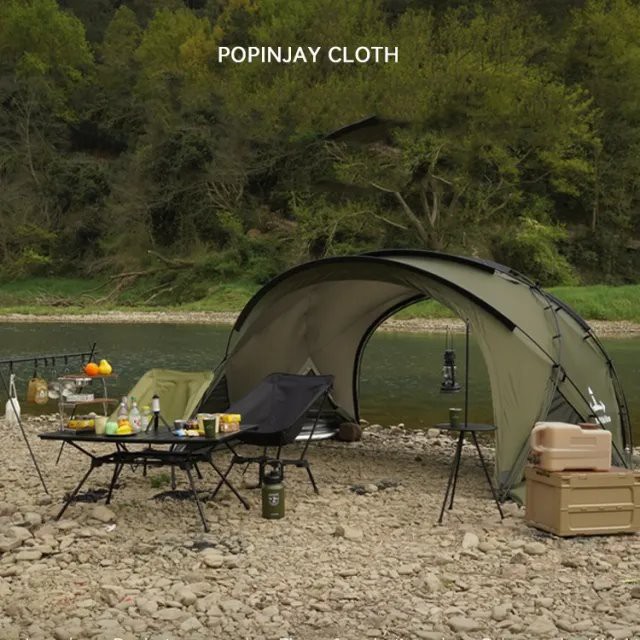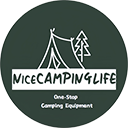How to find a flat area to set up a camping tent?
Finding a flat area to set up a camping tent is crucial for a comfortable and safe camping experience. As a camping tent supplier, I've seen firsthand how the right spot can make or break a trip. In this blog, I'll share some tips on how to find that perfect flat area for your tent.
Start with a Map
Before you even head out to the campsite, it's a good idea to look at a map. Many campsites have maps available online or at the entrance. These maps can show you the general layout of the area, including where the flat spots might be. Look for areas marked as “tent camping” or “picnic areas,” as these are often flat and suitable for setting up a tent.
If you're camping in a more remote area, a topographical map can be extremely helpful. It will show you the elevation changes in the area, allowing you to identify flat or gently sloping areas. You can usually find topographical maps at outdoor stores or online.
Consider the Terrain
Once you're at the campsite, take a good look around. The terrain can vary greatly from one spot to another. You want to avoid areas with large rocks, roots, or uneven ground. These can not only make it difficult to set up your tent but also make your sleeping experience uncomfortable.
Look for areas that are relatively smooth and free of debris. Grassy areas are often a great choice, as they provide a soft surface for your tent. However, make sure the grass isn't too long, as it can attract insects and make it harder to stake your tent.
Another thing to consider is the slope of the ground. You don't want to set up your tent on a steep slope, as it can cause you to slide to one end of the tent during the night. A gentle slope is usually okay, but try to position your tent so that your head is at the higher end.
Check for Drainage
One of the most important factors to consider when choosing a flat area for your tent is drainage. You don't want to set up your tent in a low - lying area that could collect water during a rainstorm. Look for areas that are slightly elevated or have good natural drainage.
Check the ground for signs of water pooling, such as muddy patches or depressions. If you see these signs, it's best to choose a different spot. Also, look for nearby natural drainage channels, such as small ditches or gullies, and make sure your tent isn't in the path of any potential water flow.
Look for Shelter
While finding a flat area is important, you also want to consider shelter. You don't want to set up your tent in an exposed area where it could be buffeted by strong winds. Look for areas that are sheltered by trees, rocks, or other natural features.
Trees can provide excellent wind protection, but make sure the trees are healthy and the branches are not overhanging your tent. Dead or damaged trees can pose a danger, especially during a storm.
If there are no natural shelters available, you can use your tent's rainfly or a tarp to create some additional protection. Just make sure it's properly secured.
Test the Spot
Once you've found a potential spot, it's a good idea to test it out. Lay out your tent footprint or a tarp on the ground to see if it fits properly. Walk around on the area to make sure it feels flat and stable.
If you're using a tent with stakes, try pounding a few stakes into the ground to see how easy or difficult it is. If the ground is too hard or rocky, you may need to find a different spot.
Types of Tents for Different Flat Areas
At our camping tent supply, we offer a variety of tents suitable for different flat areas. For solo campers or couples, our All 2 Person Tents are a great choice. They are lightweight and easy to set up on a small, flat area.
If you're looking for a more unique camping experience, our Outdoor Bubble Camping Tent can be set up on a flat grassy or sandy area. It provides a clear view of the stars at night and a close - to - nature experience.

![T0[BB7L]KNPLPEJ]61@$YOM](/uploads/202338579/camping-tene-for-familyef81eeb4-7482-4ed6-9b11-7fcce0cf5cce.jpg)
For families, our Camping Tent For Family is designed to fit more people and requires a larger flat area. It's sturdy and spacious, perfect for a family camping trip.
Conclusion
Finding a flat area to set up your camping tent is an important part of a successful camping trip. By following these tips, you can ensure that you choose a spot that is comfortable, safe, and suitable for your tent.
If you're in the market for a new camping tent, we're here to help. We offer a wide range of high - quality camping tents at competitive prices. Whether you're a solo camper, a couple, or a family, we have the perfect tent for you. If you have any questions or would like to discuss your camping tent needs, feel free to reach out to us. We're always happy to assist you in finding the right tent for your next adventure.
References
- “The Complete Guide to Camping.” Outdoor Life Magazine.
- “Camping 101: Choosing the Right Campsite.” National Park Service.
